Artificial Intelligence (AI) has become a cornerstone of modern technology, driving innovation and transforming industries across the globe. As we navigate through the 4.0 era, AI’s impact is more profound than ever, offering unprecedented opportunities for growth and efficiency. This article delves into the intricacies of AI, exploring its various facets, applications, and future potential.
What is Artificial Intelligence?
Artificial Intelligence (AI) is a field in computer science that focuses on creating computer systems that are capable of performing tasks that require human intelligence. The foundation of AI is algorithms, machine learning models, which allow computers to learn from data and experience without direct human intervention. Therefore, they have the ability to automate, analyze, and even make decisions based on available information.
Definition and History: Artificial Intelligence, often abbreviated as AI, refers to the simulation of human intelligence in machines that are programmed to think and learn like humans. The concept of AI dates back to ancient times, but it wasn’t until the mid-20th century that it began to take shape as a scientific discipline. The term “Artificial Intelligence” was coined in 1956 by John McCarthy, a computer scientist, during the Dartmouth Conference. Since then, AI has evolved from simple rule-based systems to complex algorithms capable of learning and adapting.
Evolution of AI: The journey of AI has been marked by significant milestones. In the early days, AI research focused on symbolic methods and problem-solving techniques. The 1980s saw the rise of expert systems, which were designed to mimic the decision-making abilities of human experts. The advent of machine learning in the 1990s revolutionized AI, enabling systems to learn from data and improve over time. Today, AI encompasses a wide range of technologies, including deep learning, neural networks, and natural language processing.
Importance in the Modern World: AI has become an integral part of our daily lives, influencing everything from how we communicate to how we work. It powers virtual assistants like Siri and Alexa, recommends products on e-commerce platforms, and even helps diagnose diseases. In the business world, AI is driving efficiency, enhancing decision-making, and opening up new avenues for innovation. As we move further into the 4.0 era, the importance of AI will only continue to grow, shaping the future of technology and society.
Artificial intelligence software has become an indispensable part of today’s life, easily found in many familiar applications such as virtual assistants, Amazon Echo or Google Home,… These devices use AI to analyze and respond to voice commands.

Artificial intelligence has the ability to learn by itself and perform intelligent tasks like humans.
For example, when you ask about the weather, AI not only provides a simple answer but also analyzes real-time weather data to make more accurate predictions. Or E-Commerce sites like Amazon also use AI to analyze users’ shopping behavior, thereby suggesting suitable products. Not only that, AI also contributes to the development of security technology such as facial recognition to improve safety and security.
Types of Artificial Intelligence
- Narrow AI: Narrow AI, also known as Weak AI, is designed to perform a specific task or a narrow range of tasks. Examples include voice assistants, recommendation systems, and autonomous vehicles. Narrow AI systems are highly specialized and operate within predefined parameters. They do not possess general intelligence or the ability to perform tasks outside their designated scope.
- General AI: General AI, or Strong AI, refers to systems that possess the ability to understand, learn, and apply knowledge across a wide range of tasks, similar to human intelligence. General AI remains a theoretical concept and has not yet been realized. Researchers are working towards developing systems that can exhibit general intelligence, but significant challenges remain.
- Superintelligent AI: Superintelligent AI refers to a level of intelligence that surpasses human capabilities. This type of AI would be able to perform any intellectual task that a human can, and potentially much more. The concept of superintelligent AI raises important ethical and existential questions, as its development could have profound implications for humanity.
Benefits and Harms of Artificial Intelligence
Artificial Intelligence (AI) brings many significant benefits in various fields, but also has potential challenges and harms that we need to clearly understand as follows:
Benefits of Artificial Intelligence
AI helps improve work efficiency and productivity because they are capable of operating continuously 24/7 without needing to rest. This can increase productivity and optimize production processes. AI robots in factories can perform repetitive tasks, reduce the workload for employees and ensure higher accuracy. In addition, AI can analyze large amounts of data quickly, accurately, supporting decision-making in many fields such as finance, healthcare,…
Efficiency and Productivity: AI can automate repetitive tasks, allowing humans to focus on more complex and creative work. This leads to increased efficiency and productivity across various industries. For example, AI-powered chatbots can handle customer inquiries, freeing up human agents to address more complex issues.
Enhanced Decision Making: AI can analyze vast amounts of data and provide insights that support better decision-making. In healthcare, AI can help doctors diagnose diseases more accurately, while in finance, it can assist investors in making informed decisions. AI-driven analytics can also help businesses identify trends and opportunities.
Cost Reduction: By automating tasks and optimizing processes, AI can significantly reduce operational costs. In manufacturing, AI can predict equipment failures and schedule maintenance, reducing downtime and repair costs. In retail, AI can optimize inventory management, reducing waste and improving profitability.
The Harmful Effects of Artificial Intelligence: Challenges and Ethical Considerations
Along with the benefits, AI also contains many challenges and risks. Security and Privacy Issues is one of the major concerns when AI can collect and analyze personal data without the consent of users. This can lead to data abuse, cyber attacks forcing manufacturers to have stricter security measures. Moreover, the development of AI can lead to unemployment in many industries, especially procedural jobs. Thanks to the support of artificial intelligence AI, workers are forced to improve their skills or switch to new, more suitable fields.
Data Privacy: The widespread use of AI raises significant concerns about data privacy. AI systems often require large amounts of data to function effectively, which can include sensitive personal information. Ensuring that this data is collected, stored, and used responsibly is crucial. Regulations like the General Data Protection Regulation (GDPR) in Europe aim to protect individuals’ privacy, but ongoing vigilance and robust security measures are essential to prevent data breaches and misuse.
Job Displacement: One of the most debated topics surrounding AI is its impact on employment. While AI can create new job opportunities, it can also lead to job displacement, particularly in industries that rely heavily on manual labor or routine tasks. It’s important for businesses and governments to invest in retraining and upskilling programs to help workers transition to new roles in an AI-driven economy.
Bias and Fairness: AI systems can inadvertently perpetuate biases present in the data they are trained on. This can lead to unfair outcomes, such as biased hiring practices or discriminatory lending decisions. Ensuring that AI systems are designed and trained with fairness in mind is critical. This involves using diverse datasets, implementing bias detection and mitigation techniques, and continuously monitoring AI systems for unintended consequences.
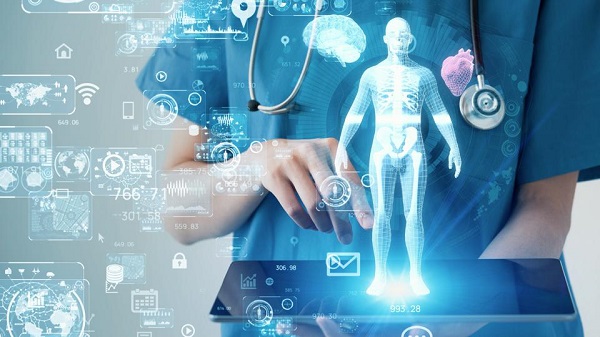
Artificial intelligence software contributes greatly to the development of the medical field.
However, in reality, AI is still widely applied and brings many benefits to society. Typically, the medical industry has used AI to support diagnosis, treatment, and improve the quality of health care. In education, AI will help personalize the learning process through exercises and electronic study sheets suitable for each student’s level. However, this also raises questions about the role of teachers and transparency in the assessment process.
4 Popular AI models today
Artificial Intelligence AI works based on many different models and techniques, each of which has its own role in solving specific problems. Below are the popular AI models today:
Machine Learning: The Heart of AI
Machine Learning is a subset of AI that involves training algorithms to learn from data and make predictions or decisions without being explicitly programmed. It is the driving force behind many AI applications, from recommendation systems to fraud detection. Machine learning algorithms can be categorized into supervised, unsupervised, and reinforcement learning, recognize patterns in data and make predictions or decisions based on these patterns
For example, in e-commerce, Machine Learning supports product recommendations based on user shopping behavior, thereby enhancing personalized customer experiences. In the financial sector, machine learning models are capable of detecting fraud by analyzing transactions and identifying unusual behaviors, helping to protect user assets.
Supervised Learning: Supervised learning is a type of machine learning where the algorithm is trained on labeled data. This means that the input data is paired with the correct output, allowing the algorithm to learn the relationship between the two. Supervised learning is commonly used in applications like image recognition, where the algorithm is trained on a dataset of labeled images to identify objects in new images.
Unsupervised Learning: Unsupervised learning involves training an algorithm on data without labeled outputs. The algorithm must identify patterns and relationships within the data on its own. This type of learning is often used for clustering and anomaly detection. For example, unsupervised learning can be used to group customers with similar behaviors for targeted marketing campaigns.
Reinforcement Learning: Reinforcement learning is a type of machine learning where an agent learns to make decisions by interacting with its environment. The agent receives rewards or penalties based on its actions, and it aims to maximize its cumulative reward over time. Reinforcement learning is used in applications like game playing, where the agent learns to play a game by receiving feedback on its performance.

Deep Learning and Neural Networks
Deep Learning is a specialized form of machine learning that uses neural networks with multiple layers to analyze and interpret complex data, thereby improving accuracy and predictive ability. Deep Learning has made great strides in areas such as speech recognition, natural language processing and image recognition. It has been particularly successful in tasks such as image and speech recognition. Deep learning models require large amounts of data and computational power, but they can achieve remarkable accuracy and performance. For example, in the medical field, deep learning technology supports medical imaging diagnosis such as X-ray, MRI, … helping doctors detect diseases early and recommend effective treatment methods.
Convolutional Neural Networks: Convolutional Neural Networks (CNNs) are a type of deep learning model designed for processing structured grid data, such as images. CNNs use convolutional layers to automatically detect and learn features from the input data. They have been highly successful in tasks like image classification, object detection, and facial recognition.
Recurrent Neural Networks: Recurrent Neural Networks (RNNs) are designed for sequential data, such as time series or natural language. RNNs have connections that form directed cycles, allowing them to maintain a memory of previous inputs. This makes them well-suited for tasks like language modeling, speech recognition, and machine translation.
Applications in Image and Speech Recognition: Deep learning models, particularly CNNs and RNNs, have achieved remarkable success in image and speech recognition. In image recognition, CNNs can identify objects, faces, and scenes with high accuracy. In speech recognition, RNNs can transcribe spoken language into text and enable voice-controlled applications. These advancements are driving innovation in fields like healthcare, security, and entertainment.
Natural Language Processing (NLP)
Natural Language Processing (NLP) Also in the category of artificial intelligence AI, it focuses on the ability of computers to understand, analyze and create natural human language. NLP is applied in many advanced technologies such as translation, virtual assistants, emotion analysis,…
Virtual assistants like Apple’s Siri and Amazon’s Alexa use NLP to understand and respond to user queries, improving human-computer interactions. In business, NLP helps analyze customer reviews and feedback on Social Media, so businesses can better understand customer needs and desires to improve products and services.
Text Analysis: Natural Language Processing (NLP) involves the interaction between computers and human language. Text analysis is a key component of NLP, enabling machines to understand, interpret, and generate human language. Applications of text analysis include sentiment analysis, where algorithms determine the sentiment expressed in a piece of text, and text summarization, where algorithms generate concise summaries of longer documents.
Speech Recognition: Speech recognition is another important aspect of NLP, allowing machines to convert spoken language into text. This technology is used in applications like voice assistants, transcription services, and voice-controlled devices. Advances in speech recognition have made it possible for machines to understand and respond to natural language with high accuracy.
Chatbots and Virtual Assistants: Chatbots and virtual assistants are AI-powered tools that use NLP to interact with users in natural language. They can perform a wide range of tasks, from answering questions to booking appointments. Chatbots are commonly used in customer service to provide instant support, while virtual assistants like Siri and Alexa help users with everyday tasks.
Computer Vision
Computer Vision focuses on the ability of computers to understand and interpret natural images and videos. Computer vision technology is widely applied in many fields such as security, medicine, and automation. In security, facial recognition systems help monitor and protect important areas. Computer Vision also makes an important contribution to the automotive industry by helping cars recognize paths, obstacles, and other vehicles, thereby improving traffic safety.
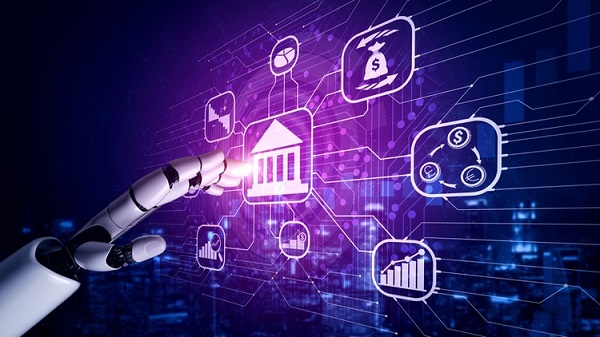
AI models with different techniques are applied to suitable fields.
Applications of AI in Various Industry
Artificial Intelligence (AI) has been widely applied in many areas of life, bringing many conveniences and improving operational efficiency in different industries. Below are some common and important applications of AI in practice:
AI in Robotics
Autonomous Robots: AI is driving the development of autonomous robots that can perform tasks without human intervention. These robots use sensors, machine learning algorithms, and computer vision to navigate and interact with their environment. Autonomous robots are being used in various industries, from manufacturing and logistics to healthcare and agriculture.
Human-Robot Interaction: Human-robot interaction (HRI) is a field of study focused on the interaction between humans and robots. AI plays a crucial role in enabling robots to understand and respond to human actions and emotions. This is particularly important in applications like assistive robotics, where robots help individuals with disabilities, and social robotics, where robots interact with people in social settings.
Applications in Various Sectors: AI-powered robots are being used in a wide range of sectors. In healthcare, robots assist with surgeries, rehabilitation, and patient care. In agriculture, robots perform tasks like planting, harvesting, and monitoring crops. In logistics, robots automate warehouse operations and delivery processes. The versatility and capabilities of AI-powered robots are expanding their applications across industries.
AI in Healthcare
AI is revolutionizing healthcare by enabling more accurate diagnoses, personalized treatments, and predictive analytics. Machine learning algorithms can analyze medical images, identify patterns in patient data, and predict disease outbreaks. AI-powered tools are also being used to develop new drugs and optimize clinical trials.
AI has brought significant improvements in the medical field, from disease diagnosis to treatment, patient management, etc. AI systems are capable of analyzing medical images such as X-rays, MRIs, CT scans to detect dangerous diseases early. For example, AI can help doctors diagnose diseases by identifying abnormal patterns in medical images more quickly and accurately than traditional methods. In addition, AI is also used to monitor patient health, manage electronic medical records, predict potential medical events based on historical data, etc.
Diagnostic Tools: AI is revolutionizing healthcare by providing advanced diagnostic tools that can analyze medical images, detect diseases, and predict patient outcomes. Machine learning algorithms can identify patterns in medical data that may be missed by human doctors, leading to earlier and more accurate diagnoses. AI-powered diagnostic tools are being used in fields like radiology, pathology, and genomics.
Personalized Medicine: Personalized medicine involves tailoring medical treatments to individual patients based on their genetic, environmental, and lifestyle factors. AI is playing a key role in this field by analyzing large datasets to identify the most effective treatments for specific patients. This approach can improve patient outcomes and reduce the risk of adverse reactions.
Predictive Analytics: Predictive analytics uses AI to analyze historical data and make predictions about future events. In healthcare, predictive analytics can be used to forecast disease outbreaks, predict patient readmissions, and identify high-risk patients. This information can help healthcare providers take proactive measures to improve patient care and reduce costs.
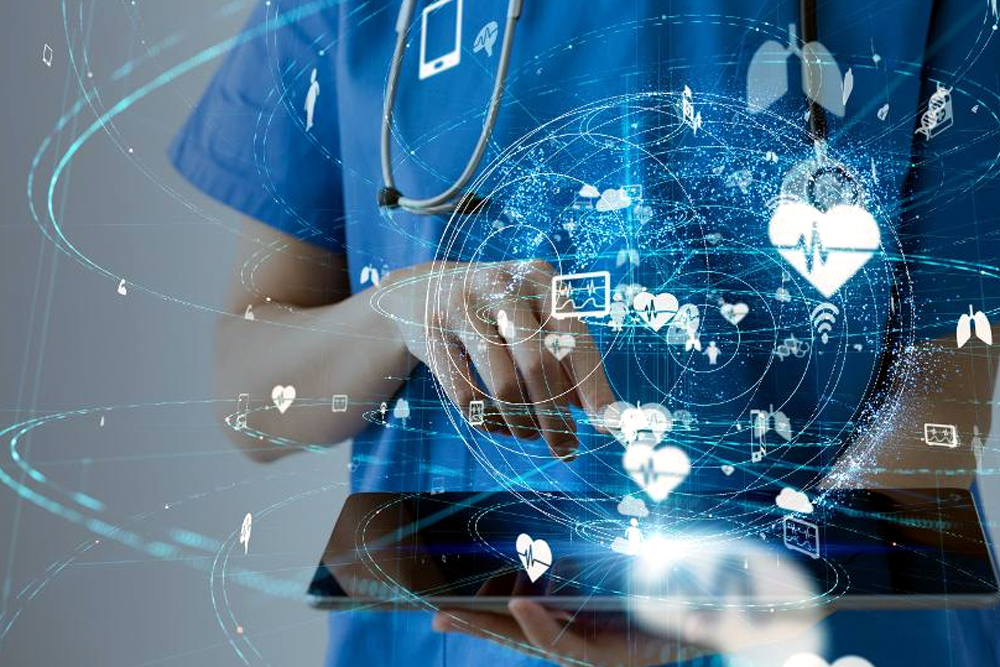
AI in Education
AI is revolutionizing the education sector by adjusting teaching content and methods to suit the needs and abilities of each student, thereby improving learning outcomes. In addition, AI also supports teachers in assessing and analyzing learning outcomes, helping to detect weak students early so that timely support measures can be taken.
AI in Transportation
AI is playing a crucial role in the transportation industry, from autonomous vehicles to traffic management systems. Self-driving cars use AI to navigate and make decisions in real-time, while AI-powered traffic management systems optimize traffic flow and reduce congestion. AI is also being used in logistics and delivery to improve efficiency and reduce costs.
AI is making great strides in the transportation industry, especially in the development of self-driving cars. Self-driving car technology uses AI to analyze the surrounding environment, identify obstacles, and make safe driving decisions. This not only helps reduce traffic accidents but also improves fuel efficiency and reduces traffic congestion. In addition, AI is also used to optimize routes and provide real-time traffic information to drivers.
Autonomous Vehicles: Autonomous vehicles, or self-driving cars, are one of the most exciting applications of AI in transportation. These vehicles use AI to navigate, make decisions, and interact with their environment. By analyzing data from sensors, cameras, and other sources, AI can enable vehicles to drive safely and efficiently without human intervention.
Traffic Management: AI is improving traffic management by analyzing data from various sources, such as traffic cameras, sensors, and GPS devices. Machine learning algorithms can predict traffic patterns, optimize traffic signals, and reduce congestion. This leads to smoother traffic flow, shorter travel times, and reduced emissions.
Logistics and Delivery: AI is revolutionizing logistics and delivery by optimizing routes, predicting demand, and automating processes. Machine learning models can analyze data to identify the most efficient delivery routes, reducing fuel consumption and delivery times. AI-powered robots and drones are also being used to automate the delivery process, improving efficiency and reducing costs.
AI in Marketing
Artificial intelligence is changing the way marketing is done by optimizing the efficiency of data collection and analysis, thereby creating personalized campaigns, promoting marketing automation, etc. AI collects and analyzes data from multiple sources to better understand customer behavior and preferences, thereby creating effective marketing strategies.
AI also helps automate marketing processes, helping to reduce pressure on human resources. For example, using chatbots to interact with customers 24/7. In addition, AI also supports information search, quick and accurate content creation, and basic image design in just a few seconds.
In some marketing campaigns, AI is also used to create interesting digital experience tools for users. A typical case study of applying AI in Creative marketing activities is OMO and its Tet 2024 campaign “Dirty to sow hope”. This Brand used AI to create minigames in the campaign, allowing players to chat with Chatbots and use the tool. AI image generation to give players unique Tet photos, accompanied by meaningful wishes. This activity not only brings an interesting experience to players but also incorporates the beauty of traditional Vietnamese Tet culture.

Uses AI to create fun minigames for users
AI in E-Commerce
In the e-commerce sector, AI plays a vital role in improving the customer shopping experience. AI-based product recommendation systems analyze users’ shopping behavior and browsing history to suggest relevant products, thereby enhancing personalized experiences and boosting Sales. Furthermore, AI is also used for inventory management, supply chain optimization, and market demand prediction.
AI in Customer Service
AI has significantly improved the quality of customer service through the use of virtual assistants and chatbots. AI chatbots are capable of handling customer requests and frequently asked questions quickly, accurately, and operate 24/7 without needing to rest. This saves time and costs for businesses while improving customer satisfaction.
AI in Finance
In the finance industry, AI is being used for fraud detection, algorithmic trading, and risk management. Machine learning models can analyze vast amounts of financial data to identify suspicious activities, predict market trends, and optimize investment strategies. AI is also enhancing customer service through chatbots and personalized financial advice.
Fraud Detection: AI is enhancing fraud detection in the finance industry by analyzing transaction data to identify suspicious activities. Machine learning algorithms can detect patterns and anomalies that may indicate fraudulent behavior, enabling financial institutions to take swift action. AI-powered fraud detection systems are more accurate and efficient than traditional methods, reducing the risk of financial losses.
Algorithmic Trading: Algorithmic trading involves using AI algorithms to execute trades based on predefined criteria. These algorithms can analyze market data, identify trading opportunities, and execute trades at high speeds. AI-powered trading systems can optimize investment strategies, reduce trading costs, and improve market efficiency.
Risk Management: AI is transforming risk management by providing advanced tools for analyzing and mitigating risks. Machine learning models can assess credit risk, market risk, and operational risk by analyzing large datasets and identifying potential threats. AI-powered risk management systems can help financial institutions make informed decisions and comply with regulatory requirements.
AI in Retail
AI is transforming the retail sector by providing personalized shopping experiences, optimizing inventory management, and improving customer insights. Recommendation systems suggest products based on customer preferences, while AI-powered analytics help retailers understand consumer behavior and make data-driven decisions.
Customer Insights: AI is helping retailers gain deeper insights into customer behavior and preferences. Machine learning algorithms can analyze data from various sources, such as purchase history, browsing patterns, and social media interactions, to identify trends and predict future behavior. This information allows retailers to tailor their marketing strategies, optimize product offerings, and enhance the overall customer experience.
Inventory Management: Effective inventory management is crucial for retail success, and AI is making it more efficient than ever. AI-powered systems can predict demand, optimize stock levels, and reduce waste. By analyzing sales data and market trends, these systems can ensure that the right products are available at the right time, minimizing stockouts and overstock situations.
Personalized Shopping Experiences: AI is transforming the shopping experience by providing personalized recommendations and offers. Recommendation engines analyze customer data to suggest products that match individual preferences, increasing the likelihood of purchase. AI-powered chatbots and virtual assistants can also provide personalized assistance, helping customers find what they need quickly and easily.
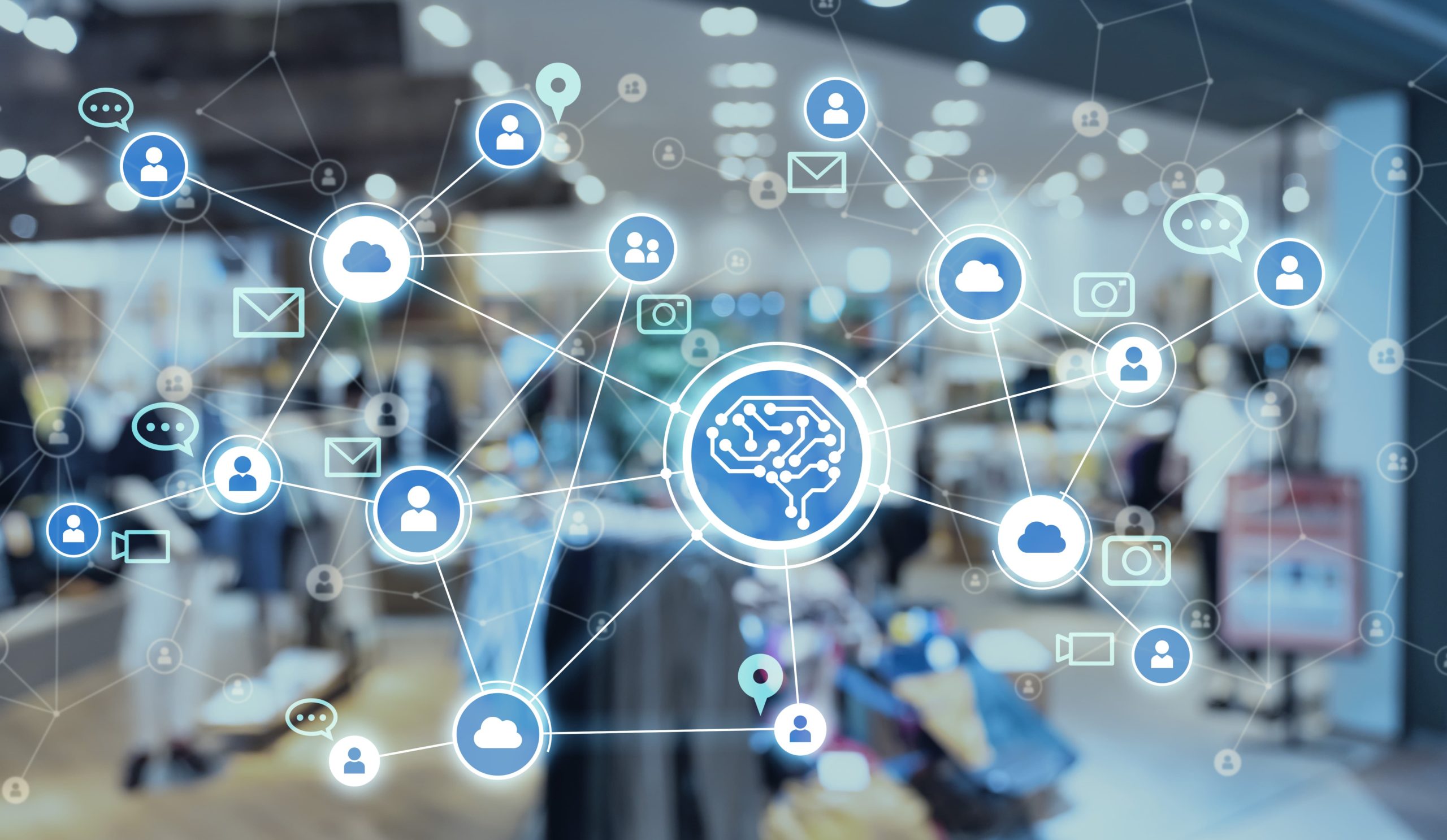
AI in Manufacturing
In manufacturing, AI is being used for predictive maintenance, quality control, and supply chain optimization. Machine learning algorithms can predict equipment failures, identify defects in products, and optimize production schedules. AI is also enabling the development of smart factories, where machines and systems communicate and collaborate autonomously.
Predictive Maintenance: Predictive maintenance uses AI to monitor equipment and predict when maintenance is needed. By analyzing data from sensors and other sources, AI can identify patterns that indicate potential failures. This allows manufacturers to perform maintenance before a breakdown occurs, reducing downtime and repair costs.
Quality Control: AI is enhancing quality control in manufacturing by automating the inspection process. Machine learning algorithms can analyze images and data to detect defects and ensure that products meet quality standards. This improves efficiency and reduces the risk of defective products reaching customers.
Supply Chain Optimization: AI is optimizing supply chain management by providing real-time insights and predictive analytics. Machine learning models can analyze data from various sources to forecast demand, optimize inventory levels, and improve logistics. This helps manufacturers reduce costs, improve efficiency, and respond more quickly to market changes.
AI and Data Science
Big Data Analytics: AI is a powerful tool for analyzing big data, enabling organizations to extract valuable insights from large and complex datasets. Machine learning algorithms can identify patterns, trends, and correlations that would be difficult or impossible to detect manually. This information can inform strategic decisions, drive innovation, and improve operational efficiency.
Data Mining: Data mining involves extracting useful information from large datasets. AI-powered data mining techniques can identify hidden patterns and relationships within the data, providing valuable insights for businesses. This can be used for various purposes, such as market research, customer segmentation, and fraud detection.
Predictive Modeling: Predictive modeling uses AI to create models that can predict future outcomes based on historical data. These models can be used in various applications, such as forecasting sales, predicting customer behavior, and assessing risk. By providing accurate and actionable predictions, AI-powered predictive modeling can help organizations make informed decisions and stay ahead of the competition.
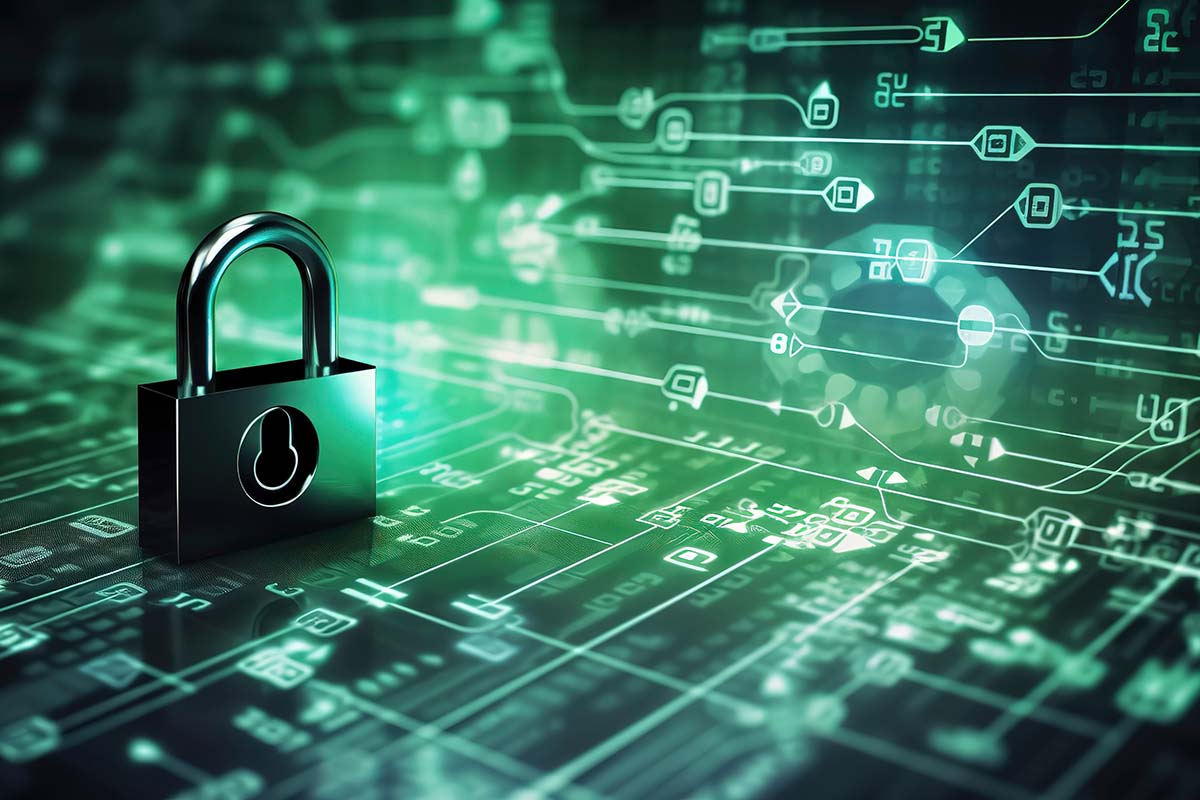
AI and Cybersecurity
Threat Detection: AI is enhancing cybersecurity by providing advanced threat detection capabilities. Machine learning algorithms can analyze network traffic, identify anomalies, and detect potential threats in real-time. This allows organizations to respond quickly to security incidents and prevent data breaches.
Automated Response: AI is also enabling automated response to cybersecurity threats. AI-powered systems can take immediate action to mitigate threats, such as isolating affected systems, blocking malicious traffic, and applying security patches. This reduces the time it takes to respond to incidents and minimizes the impact of cyberattacks.
Enhancing Security Protocols: AI is helping organizations enhance their security protocols by providing insights into vulnerabilities and recommending best practices. Machine learning models can analyze security data to identify weaknesses and suggest improvements. This proactive approach to cybersecurity can help organizations stay ahead of emerging threats and protect their sensitive information.
What is Branding?
Definition and Importance
Branding is the process of creating a unique identity for a product, service, or organization. It involves developing a brand name, logo, and other visual elements, as well as defining the brand’s values, mission, and personality. Effective branding helps differentiate a product or service from its competitors, build customer loyalty, and create a strong emotional connection with the target audience.
Role of AI in Branding
AI is playing an increasingly important role in branding by providing insights and tools that enhance brand strategy. Machine learning algorithms can analyze customer data to identify trends and preferences, helping brands tailor their messaging and positioning. AI-powered tools can also automate the creation of brand assets, such as logos and marketing materials, ensuring consistency and efficiency.
Future Trends in AI-Driven Branding
The future of branding will be shaped by AI-driven technologies that enable more personalized and interactive brand experiences. AI-powered chatbots and virtual assistants can engage with customers in real-time, providing personalized recommendations and support. Augmented reality (AR) and virtual reality (VR) technologies, powered by AI, can create immersive brand experiences that captivate and engage audiences. As AI continues to evolve, it will open up new possibilities for brands to connect with their customers in innovative and meaningful ways.
Conclude
Artificial Intelligence is a transformative technology that is reshaping industries and redefining the way we live and work. As we continue to navigate the 4.0 era, the potential of AI is boundless, offering unprecedented opportunities for innovation and growth. By understanding the various facets of AI, from its applications and benefits to its challenges and future prospects, we can harness its power to create a better, more efficient, and more connected world.
Although AI brings many outstanding benefits, increases work efficiency, improves the quality of life, it still poses many challenges in terms of security and future job opportunities. With continuous development, AI promises to change the future of the world, bringing many new opportunities to society. However, to exploit the full potential of AI, we need to consider carefully to make the most correct and effective decisions!
FAQs
What is Artificial Intelligence?
Artificial Intelligence (AI) refers to the simulation of human intelligence in machines that are programmed to think and learn like humans. It encompasses a wide range of technologies, including machine learning, deep learning, and natural language processing.
How is AI used in everyday life?
AI is used in various aspects of everyday life, from virtual assistants like Siri and Alexa to personalized recommendations on platforms like Netflix and Amazon. It also powers smart home devices, autonomous vehicles, and many other applications that make our lives more convenient and efficient.
What are the benefits of AI?
AI offers numerous benefits, including increased efficiency and productivity, enhanced decision-making, and cost reduction. It can automate repetitive tasks, provide valuable insights from data, and improve the accuracy and speed of various processes.
What are the ethical considerations of AI?
Ethical considerations of AI include data privacy, job displacement, and bias and fairness. Ensuring that AI systems are designed and used responsibly is crucial to addressing these challenges and maximizing the benefits of AI.
What is the future of AI?
The future of AI is filled with exciting possibilities, including advancements in natural language processing, computer vision, and autonomous systems. AI will continue to drive innovation and transform industries, but it also raises important ethical and societal questions that must be addressed.
How does AI impact cybersecurity?
AI enhances cybersecurity by providing advanced threat detection and automated response capabilities. Machine learning algorithms can analyze network traffic and identify potential threats in real time, while AI-powered systems can take immediate action to mitigate risks and protect sensitive information.
Comment Policy: We truly value your comments and appreciate the time you take to share your thoughts and feedback with us.
Note: Comments that are identified as spam or purely promotional will be removed.
To enhance your commenting experience, consider creating a Gravatar account. By adding an avatar and using the same e-mail here, your comments will feature a unique and recognizable avatar, making it easier for other members to identify you.
Please use a valid e-mail address so you can receive notifications when your comments receive replies.
